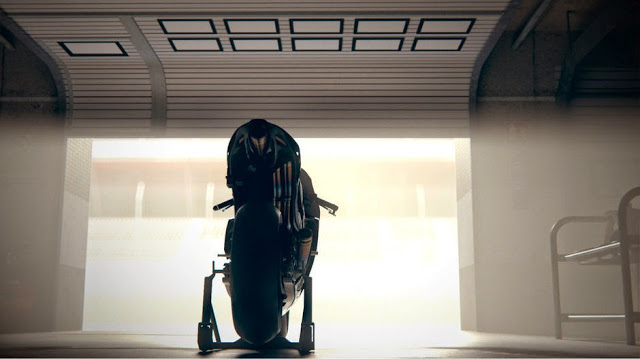

Over the past few years, endless runner games have become one of the most popular genres on mobile devices. However, that same popularity hasn’t transferred over to consoles, for reasons that are quite evident when playing Infinity Runner.
The game’s core mechanics will be familiar to anyone who’s played the mobile hit Temple Run. Players will jump, slide, and strafe to avoid obstacles and gather collectibles, and while these actions might typically be performed on a touch screen in this type of game, the same mechanics feel great using physical controls.
Infinity Runner similarly defies the trappings of its genre by delivering some very attractive — if unpolished — visuals. The game is set on a ruined spaceship, lovingly designed under the influence of schlocky sci-fi like Event Horizon and Dark City. It’s a well-executed ’90s-influenced style that makes the most of today’s tech.
The biggest deviation Infinity Runner makes from the typical endless runner formula is the inclusion of a story mode. A novel story mixes sci-fi with fantasy – werewolves roam the corridors of a badly damaged starship – as the narrative unfolds via interactions with your mysterious guide, Riley.
It’s not a particularly refined or nuanced plot, but there’s something undeniably engaging about it. As much as the storyline itself is enjoyable to chip away at, it’s laudable that developer Wales Interactive are clearly very eager to explore the use of narrative in unusual genres.
That being said, the plot of Infinity Runner unfortunately serves to undermine its core gameplay. At its best, the endless runner genre capitalizes on players’ natural instincts to go for a high score. Getting into the groove is key, which makes retrying after a game over more palatable.
While Infinity Runner does offer an arcade mode to scratch that itch, its campaign operates on a system of lives. Use up three and you’re right back to the beginning of the stage — which might be a considerable amount of progress. What’s more, levels aren’t randomly generated, so players are liable to play through the same events until you get it right.
This wouldn’t be such an issue if the game’s difficulty wasn’t increased by a sense of confusion as to what elements in the surroundings are obstacles and what is merely set dressing. Trial and error is the only real option, and that sort of situation is not fun for a game in this genre.
Here’s an example: there’s an obstacle in the second set of levels where steam is sprayed out into a hallway. Sliding seems like the best option, but results in a death. Said steam is twenty seconds away from the last checkpoint, so getting back to it isn’t immediate — this time, strafing around the steam doesn’t work any better. It’s unclear whether the mistake is a case of bad timing or the wrong input, and the game doesn’t offer much of a response to tell the player how they failed. While a broad range of obstacles helps keep the game varied, its implementation is more frustrating than challenging.
A lack of polish further mars the experience as a hole. From typos during dialogue to the strange decision to have several achievements unlock automatically in the first few seconds of gameplay, there are some rough edges here that seem like they should have been sanded down ahead of release.
However, Infinity Runner has a certain appeal, even considering its faults. There’s a sense of creativity that shines through here, from the game’s atypical premise to its well-meaning attempts to integrate a compelling storyline into an endless runner. Anyone desperate to play this type of game on console will be pleased with the results. Beyond that, it’s difficult to wholeheartedly recommend Infinity Runner — but it’s certainly not without its merits.
Infinity Runner is available now for PC, PlayStation 4, and Xbox One. Game Rant was provided an Xbox One code for this review




 Don’t Like Podcasts? Read 17 Alternatives to the Most Popular Shows
Don’t Like Podcasts? Read 17 Alternatives to the Most Popular Shows FIFA 16 ratings: The best players by strengths
FIFA 16 ratings: The best players by strengths MotoGP 15 (PS4) Impressions - demo
MotoGP 15 (PS4) Impressions - demo GTA V Online Pacific Standard Heists Finale: Faster & Safer Route To Complete, Map Details Inside
GTA V Online Pacific Standard Heists Finale: Faster & Safer Route To Complete, Map Details Inside Super Karoshi Walkthrough
Super Karoshi Walkthrough